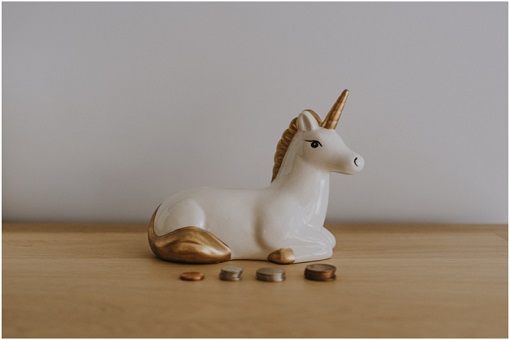Retirement is the time in your life when you no longer work full-time. This can be an ideal opportunity to travel, spend quality time with family and pursue hobbies.
It’s also the perfect time to assess your financial situation. That means taking into account everything from mortgage and tax obligations, to how much income you can live off each month.
Certificates of Deposit
A certificate of deposit (CD) is a type of savings account that offers customers the opportunity to earn interest on their deposits while locking them away for an agreed-upon period. This product has become popular among those seeking to secure money until they reach certain goals or save for retirement.
Banks and credit unions provide CDs as a way for people to save their money for an extended period without worrying about losing their capital. But there are some things you should take into consideration before opening your first CD account.
Start by searching for a certificate of deposit from an FDIC-insured bank or credit union. These institutions are insured up to $250k per depositor, so you’re covered in case the bank fails.
Another aspect to be mindful of when looking into bank CDs is the interest rate they offer. These rates can vary based on a bank’s size and term length. You can click the link: https://en.wikipedia.org/wiki/Certificate_of_deposit for more information.
Opening a CD is as easy as visiting your bank or credit union and making a deposit. Alternatively, you may purchase them from brokerage firms or independent salespeople known as “deposit brokers.” These individuals often collaborate with investment professionals and may be able to negotiate better rates on your behalf.
CDs offer fixed annual percentage yields that don’t fluctuate with inflation, so they tend to reduce purchasing power over the long term.
Additionally, most CDs lack liquidity. You cannot easily withdraw funds from a CD unless you meet certain conditions, including paying any applicable penalties.
No matter your financial situation, always ensure you’re getting the best deal for your money by comparing rates and fees between different banks and institutions. Online banks and credit unions may be more cost-effective than traditional brick-and-mortar banks.

Real Estate Investment Trusts
Real estate investment trusts (REITs) are a popular investment choice for investors seeking to diversify their portfolios. They invest in income-producing real estate properties and pay dividends to shareholders, which can be taxed as regular income and thus help reduce overall taxation payments.
REITs can be an excellent addition to your retirement portfolio, offering several advantages over traditional stock investments. They’re less volatile than stocks and typically pay high dividend yields. Plus, REITs have the potential to rise alongside stock prices, giving you a greater overall return.
When purchasing REIT shares, you have three options: investing directly in REITs through a brokerage account, mutual fund or exchange-traded fund. Each has its own advantages over investing directly in REITs such as lower fees, simplified research and greater diversification. You can click here for more information.
You may be able to purchase REITs through workplace retirement plans, which may offer these assets as part of the benefits package. No matter which route you take, a professional financial advisor can guide you through selecting an investment strategy tailored specifically for your goals and needs.
REITs come in many varieties, each with a distinct property focus and risk profile. Some specialize in one particular real estate type such as residential or commercial; others have sector-specific focus like healthcare or office REITs.
If you want to invest in REITs but lack the time or experience, consider purchasing a mutual fund that specializes in REITs. These funds vet and invest in multiple REITs, providing diversification and lower risks than buying individual REITs.

Bond Mutual Funds
Bond mutual funds offer investors a way to diversify their portfolio and gain exposure to the entire market. However, they may not be suitable for everyone and should be carefully considered before investing. There are various aspects such as fees and expenses, investment objectives, and risk that should all be taken into account before investing.
When selecting a bond fund, one of the first factors to consider is its duration – or how long its bonds typically mature before repayment. This can have an impact on your overall risk level and return as it determines how much of a payout you may receive when these bonds mature.
Another essential factor to consider is credit quality, or the likelihood that an issuer will pay back its debt. A fund’s prospectus will outline what bonds it holds and their rating by a third-party rating agency such as Standard & Poor’s or Moody’s.
If you’re seeking a diversified bond portfolio, look for one with both long and short-term bonds, and with a low minimum investment. A low minimum means you can start small and increase your investments over time. Furthermore, opt for a bond fund with a short time horizon and relatively low duration so as to lessen exposure to interest rate fluctuations.

Bond Ladder
Bond ladders are an investment strategy designed to mitigate interest rate volatility and provide you with a stable stream of income. A ladder may be constructed using various securities such as individual bonds from companies and government agencies, municipal bonds, or certificates of deposit.
A ladder is intended to generate regular income and minimize risk, so it’s essential that you construct your ladder correctly. This requires taking a methodical approach; finding high-quality bonds with low risks is paramount.
Additionally, it’s wise to utilize multiple issuers in your portfolio in order to diversify it and protect yourself from any company defaulting on its bond payments. For instance, if purchasing corporate bonds, investing in at least 30 different companies could help minimize the likelihood of one company having financial troubles negatively impacting your holdings.
To construct a ladder, you’ll need to select the number of rungs and their distance between them (height). Typically, these are evenly spaced apart but this can vary according to individual goals.
When selecting your retirement rungs, you’ll need to take into account both your time frame and how much cash flow is necessary in each year of retirement. This could include need-based spending such as food and housing expenses, or want-based purchases like an international trip or one-time home repairs.
The ladder should also feature a variety of maturities, so you can reinvest in longer-term bonds as interest rates fluctuate. In an environment with rising interest rates, this could potentially boost your yields.
Another advantage of a ladder is that it provides protection against inflation, which could negatively impact your portfolio. Inflation causes purchasing power to decrease and may force you to sell at a loss.
Bond ladders can be an effective tool to minimize the effects of interest rate changes, especially during periods of historically low rates. When one bond in your ladder matures, you can reinvest its principal into a longer-term bond at the other end so that you maintain higher yields if interest rates shift in the future.

Investing in Gold
Gold can be an excellent way to diversify your portfolio. However, it carries risks, so you should carefully assess your financial situation before investing in gold.
Gold has a history of offering high returns, though it won’t always outperform stocks and bonds. It is highly liquid; this means you can quickly convert it to cash. It also has a lower correlation to stocks and bonds than other investments, making it a potential hedge against inflation or currency devaluation.
Depending on your preferences and level of risk tolerance, you can invest in physical gold, mining stocks, exchange-traded funds (ETFs), or futures contracts. No matter which route you take with your gold investments, most investors suggest allocating no more than 10% of your portfolio to gold. You can check out Bonds Online for more information about investment companies that specialize in precious metals. It is important to do your research before committing to any financial plan.
If you’re thinking of investing in gold, it is essential to understand the risks and how much time will be needed for research. Furthermore, bear in mind that gold does not always produce consistent cash flow.
Diversifying your portfolio is a great way to prepare yourself for the financial realities of retirement. It gives you the best chance of having the capital at hand to live your life the way you want in your golden years.

|
|
April 23rd, 2023 by financetwitter
|


|

|

|

|

|

|




























Comments
Add your comment now.
Leave a Reply